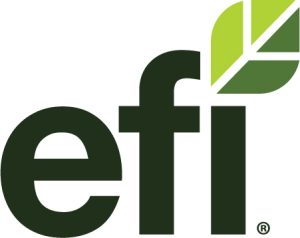The Fireside Chat Series gives members of the fresh produce industry who are curious about Equitable Food Initiative (EFI) an opportunity to hear directly from EFI staff through casual conversations that explore important aspects of the EFI Program.
 This episode’s chat features a conversation between EFI’s Marketing and Sales Manager, Madelyn Edlin, and EFI’s Managing Director, Kenton Harmer, that dives into the meaning of worker-led improvements, worker leadership and the benefits of a workforce equipped to identify problems and create solutions.
This episode’s chat features a conversation between EFI’s Marketing and Sales Manager, Madelyn Edlin, and EFI’s Managing Director, Kenton Harmer, that dives into the meaning of worker-led improvements, worker leadership and the benefits of a workforce equipped to identify problems and create solutions.
“When we think about silos we work in, environmental action, social action, food safety, pest management, all separate, we’re losing the opportunity that comes from seeing the interconnectedness and the social tissue that binds them all together is the concept of worker leadership, giving a voice, an agency and a channel to show leadership in identifying and solving problems in these spheres.”
– Kenton Harmer, Managing Director for EFI
What does the concept of worker-led improvements mean?
(Find the full response to question 1 starting at minute 1:22)
Worker-led means giving workers the space, skills and abilities, and incentives to show leadership, particularly when it comes to identifying problems and having access to bring leadership to contribute to an organizational response to generating solutions.
The collaborative space created between workers and management through the EFI Program levels the room. Defusing power structures allows all levels of the workforce to bring their leadership and expertise into the room and build an effective structure for deciding on options to solve problems.
Why would a grower be interested in incorporating this style of leadership into their business?
(Find the full response to question 2 starting at minute 5:43)
Stepping into the management structures for communication and problem solving that incorporate worker leadership can be a big change, and for some, considering change on the management level can be intimidating.
Workers benefit from the change in how they think about their role at work and their profession, with that comes benefits to business outcomes for employers who make the move to a more collaborative organizational culture.
Problems can be identified faster and addressed more effectively when the people closest to the daily tasks of planting, tending, harvesting, packing and transporting produce have the training and welcome to raise a hand and bring issues to the attention of management. And small problems can be addressed before they grow into big problems.
EFI has also observed that responses for solutions to problems and implementation of solutions that involve collaboration and leadership input from workers are likely to be more effective and highly adopted across the workforce than decisions that come from the management level alone.
What would inspire a worker to put extra thought and effort into their job?
(Find the full response to question 3 starting at minute 8:00)
When the incentive structure aligns with worker motivations and company goals, collaboration and teamwork are an easy win for all.
EFI has learned that the assumptions one might have about motivations and incentives can be misleading and it’s important to bring questions like these directly to the workers to build an incentive structure that meets their needs and reaches the company’s objectives.
In 2016, EFI hosted the Shared Values Summit to seek out an answer to the question of compensation for the value workers added to the system by contributing to compliance to the EFI Standards. In attendance were 35 farmworkers from EFI-certified farms from multiple countries and members of the senior leadership for EFI’s retail partners. It was assumed that the focus would be on finding an appropriate number for financial compensation, but discussion brought to light that compensation, while important to workers, is not the only lens they use for adding value back to them. The workers present expressed their value for soft benefits, like having their voices heard, working in an atmosphere of dignity and respect and the importance of feeling like they were part of a valuable profession.
While changing farm culture to include more of these soft benefits can go a long way to incentivize workers, EFI has observed that some discoveries made from worker feedback surrounding lack of engagement will require a more systemic change.
Conversations with workers have yielded a set of unexpected considerations when it comes to what affects behavior and engagement in worker leadership: multi-generational trauma, poverty and isolation play a larger role than training or education as was assumed.
Hearing this background from workers opens new directions for conversations that can inform incentive structures and needed systemic changes.
What does an effective worker-led initiative look like in the real world?
(Find the full response to question 4 starting at minute 15:52)
No matter how much nudging, cajoling and yelling the food safety manager of an early-adopting EFI farm brought to the table, he could not get the company’s female fieldworkers to remove their wedding bands while on the job.
The bands risked hidden pathogens that could be transmitted to a market-bound product. Through desperation and exasperation, the manager engaged the EFI Leadership Team to help come up with a solution to this food safety problem.
The team members followed the EFI problem solving cycle they learned in EFI’s training, which included gathering information directly from the people involved. They discovered that this food safety problem was rooted in a social problem. The women who continued to wear their bands despite the education and punitive action they faced, felt safer with their wedding bands in the fields, using them as a protection against sexual harassment. Which was more prevalent on the farm than previously known.
Workers were able to show leadership by gaining the data that was needed and then as a leadership team, with the and management team and workforce, they were able to take the steps necessary to arrive at zero tolerance of sexual harassment in the fields. The rings came off and the food safety problem was solved.
This awesome example of a worker leadership in problem solving captures the interconnectedness and systems-thinking that EFI processes open for an employer, putting new tools in their hands for continuous improvement of their business.
Hear more about what makes an EFI audit experience different starting at minute 19:42.
I’m ready to learn more about the EFI Model, what’s next?
Let’s have a conversation. Reach out to Madelyn Edlin or send an email to info@equitablefood.org.
Links to other conversations in the Fireside Chat Series
Fireside Chat 1: Is EFI Right for My Business?
Fireside Chat 3: What is Continuous Improvement and How Can I Achieve It?
Fireside Chat 4: What Does Corporate Responsibility Really Mean?
Summary written by: Amy Beth Dingle, Freelance Writer for EFI

